Expedition 1 crew members arrived at the Baikonur Cosmodrome in Kazakhstan to prepare for their historic launch as workers readied their spacecraft for the journey.
The first crew to live and work aboard the International Space Station (ISS) and their backups arrived at the Baikonur Cosmodrome on Oct. 26, 2000. During the five days leading up to their historic launch, they conducted a final check of their Soyuz spacecraft, already encased in its protective launch shroud, attended final exercise sessions and preflight medical exams, and held their last ground-based press conference. The State Commission met and confirmed the crews for the mission. Workers joined the Soyuz spacecraft with its rocket’s upper stage. They then mated that assembly with the launch vehicle’s booster stage before rolling the rocket out to the launch pad.
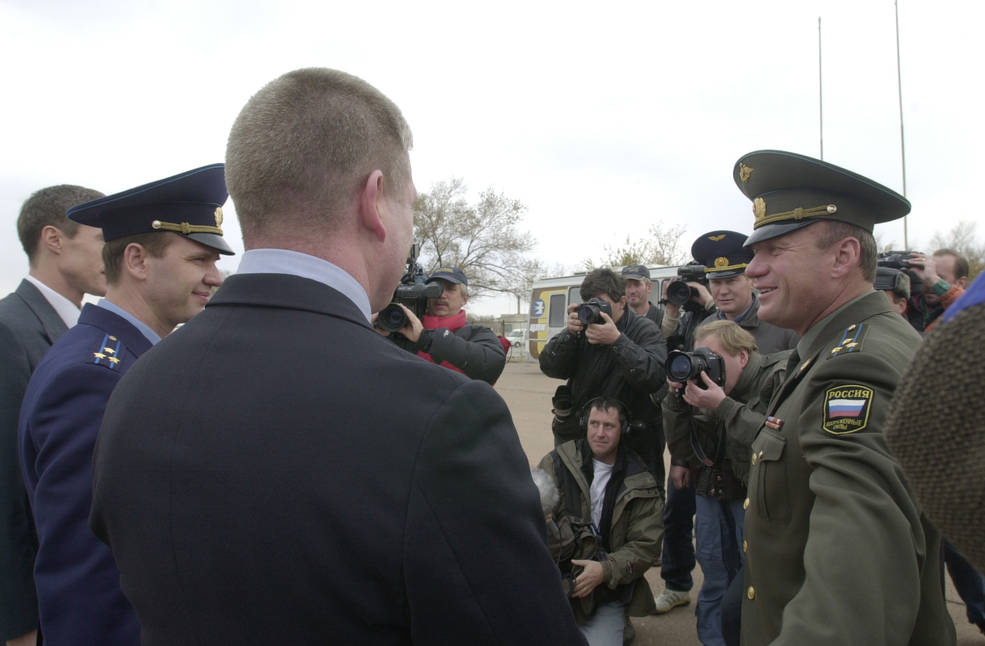
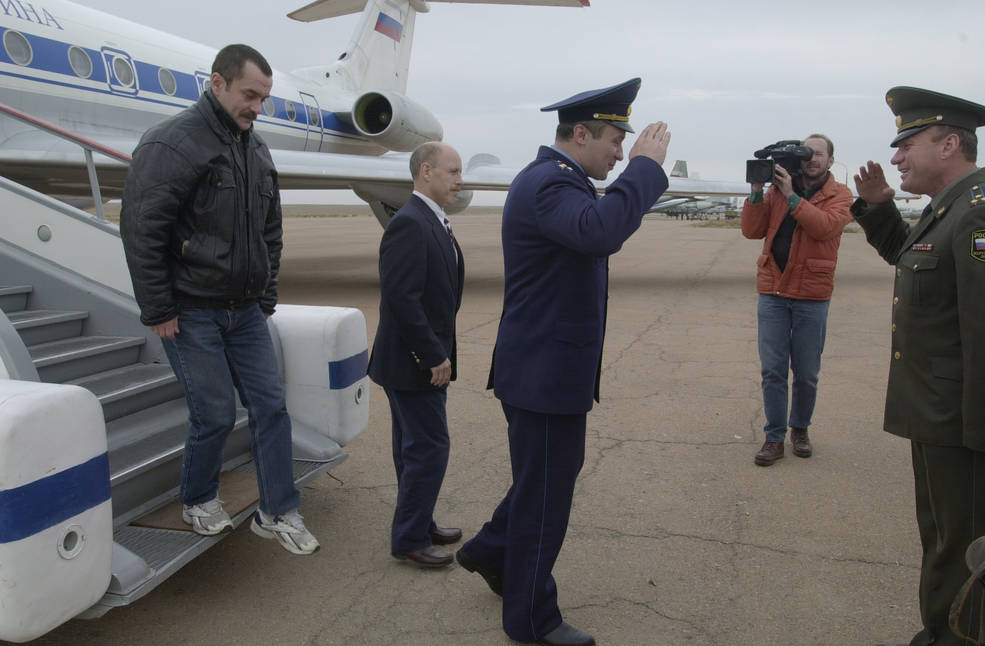
Left: The Expedition 1 prime crew of Sergei K. Krikalev, left, Yuri P. Gidzenko, both of
Roscosmos, and William M. Shepherd of NASA arrive at the Baikonur Cosmodrome in
Kazakhstan, and greeted by Russian space officials. Right: The Expedition 1 backup
crew of Mikhail V. Tyurin, left, of Roscosmos, Kenneth D. Bowersox of NASA, and
Vladimir N. Dezhurov of Roscosmos upon their arrival at Baikonur.
Photo credits: NASA/Bill Ingalls.
Expedition 1 Commander William M. Shepherd of NASA, Flight Engineer and Soyuz Commander Yuri P. Gidzenko of Roscosmos, and Flight Engineer Sergei K. Krikalev of Roscosmos, arrived at the Baikonur Cosmodrome on Oct. 26, 2000. The backup crew, Kenneth D. Bowersox of NASA and Vladimir N. Dezhurov and Mikhail V. Tyurin of Roscosmos, arrived the same day, the two crews flying in separate jets from their home base in Star City outside of Moscow. Russian space officials and a small crowd of well-wishers greeted them on the tarmac.
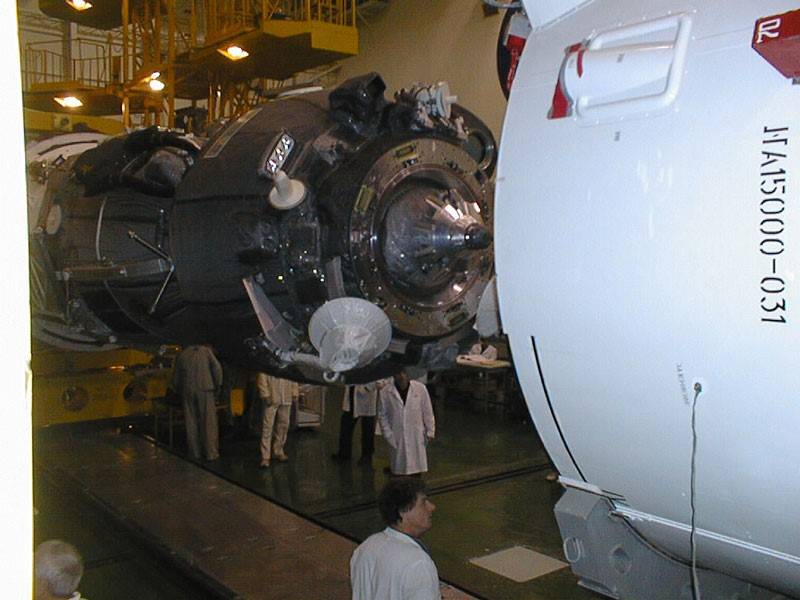
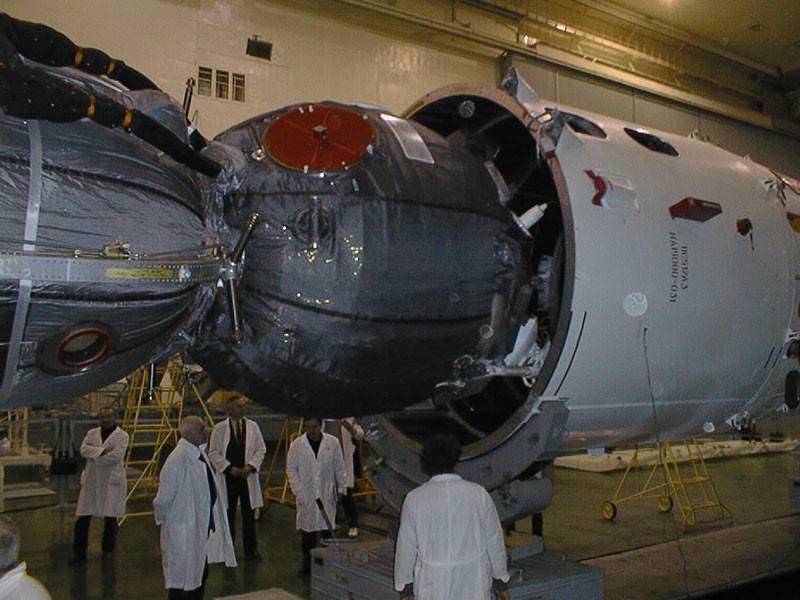
Left: Workers prepare to place the payload shroud over the Soyuz TM31 spacecraft in
the spacecraft assembly and test facility at the Baikonur Cosmodrome. Right: Workers
insert the Soyuz TM31 spacecraft into its payload shroud.
Photo credits: NASA/Bill Ingalls.
The day before the crews’ arrival, workers in Baikonur Cosmodrome’s Building 254, the spacecraft assembly and test facility, had encased their Soyuz TM31 spacecraft in its launch shroud. The aerodynamic shroud was designed to protect the spacecraft during the first few minutes of flight through the atmosphere’s dense lower regions. Workers then raised the spacecraft inside the shroud to a vertical position and placed it inside a test stand.
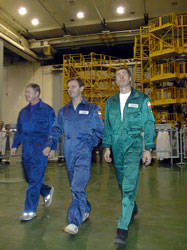
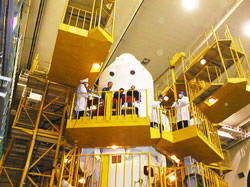
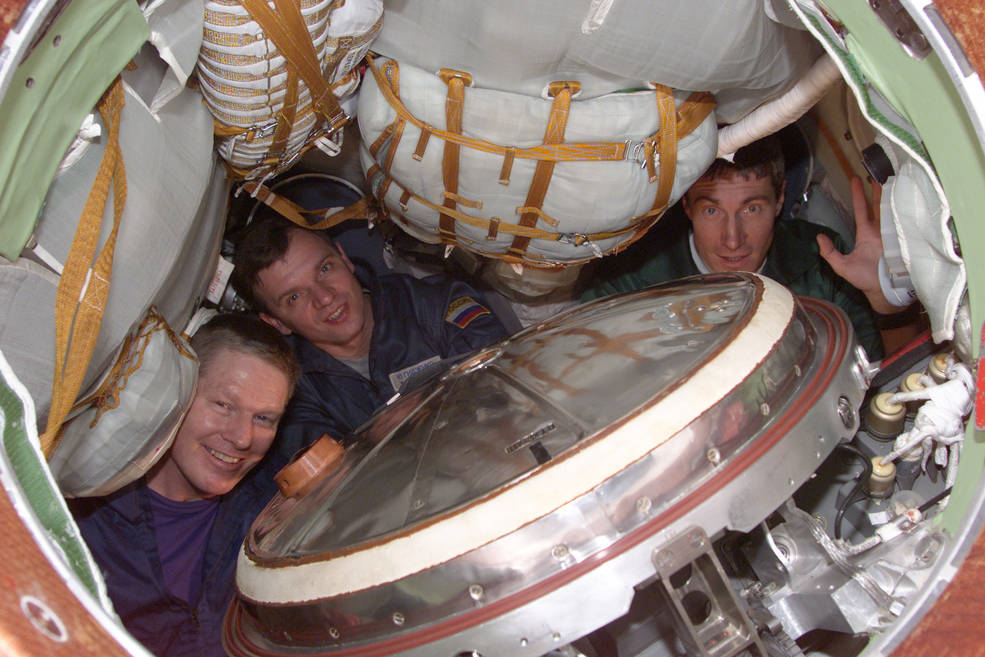
Left: Expedition 1 crew members William M. Shepherd, left, Yuri P. Gidzenko, and Sergei K. Krikalev on their way to the final preflight checkout of their Soyuz TM31 spacecraft. Middle: Expedition 1 crew members prepare to enter their Soyuz TM31 spacecraft, encased in its protective payload shroud. Right: Expedition 1 crew members Shepherd, left, Gidzenko, and Krikalev in the Soyuz TM31 descent module. Photo credits: NASA/Bill Ingalls.
On Oct. 27, Shepherd, Gidzenko, and Krikalev, clad in overalls, crawled inside their Soyuz TM31 spacecraft to conduct a final check of its systems. Bowersox, Dezhurov, and Tyurin followed with a similar test. Workers then lowered the spacecraft back to a horizontal position, placed it on a railcar, and transferred it to Building 112, the launch vehicle assembly and test facility. The crews spent the next few days visiting the museum in Baikonur, exercising, conducting medical tests, and participating in a flag-raising ceremony.
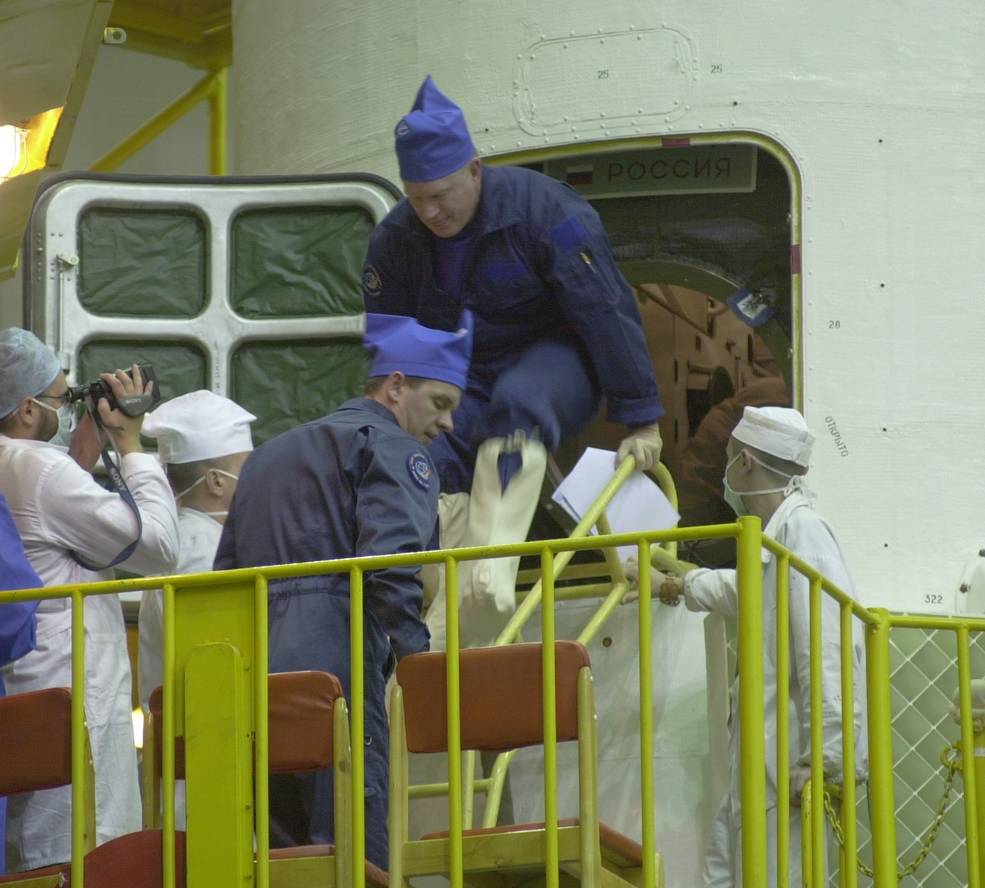
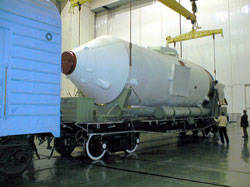
Left: Expedition 1 Commander William M. Shepherd exits the Soyuz TM31 spacecraft
following the final preflight check’s completion. Right: Workers prepare to transfer
the Soyuz TM31 spacecraft encased in its payload shroud to the rocket
assembly and test facility.
Photo credits: NASA/Bill Ingalls.

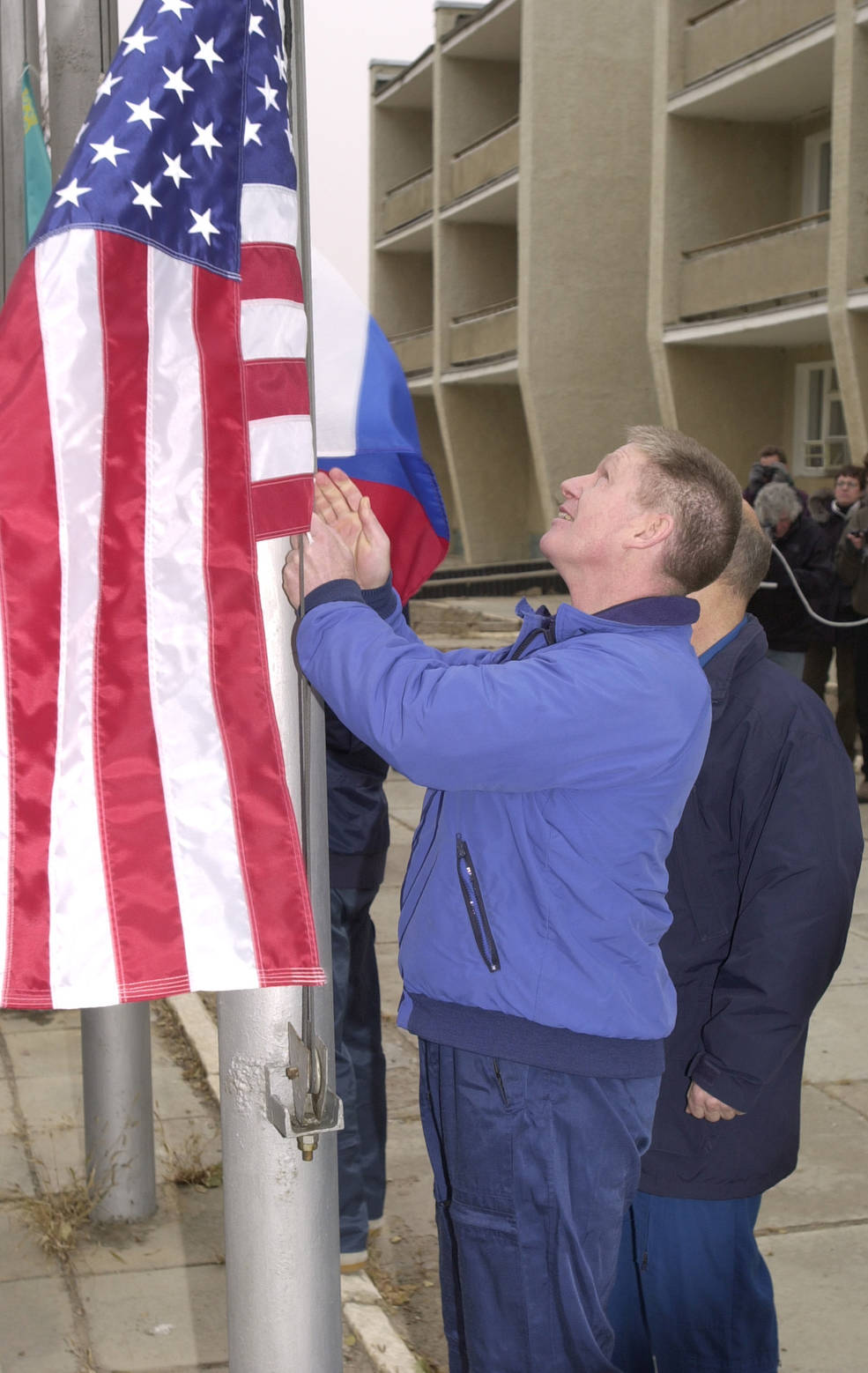
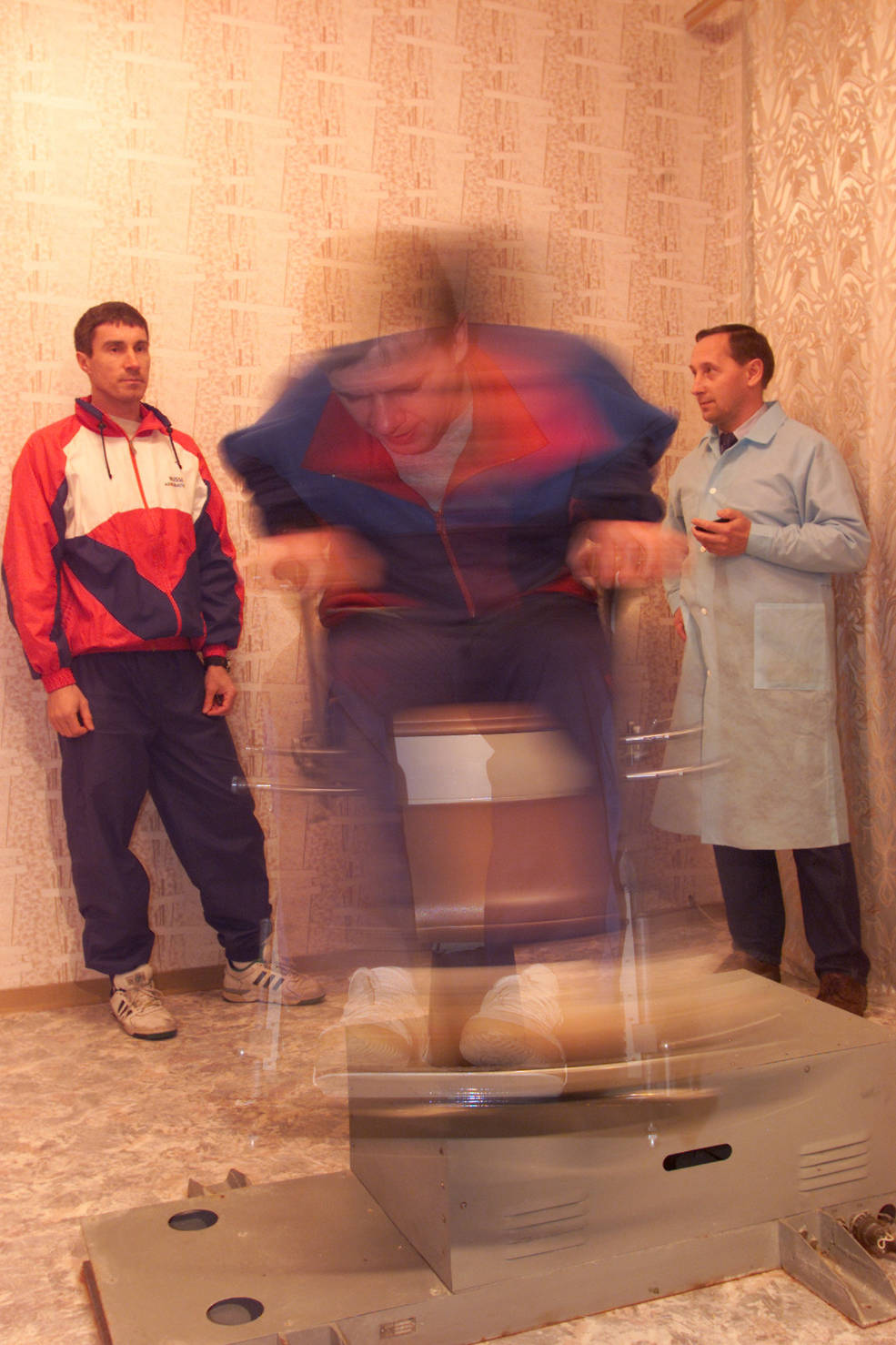
Left: Expedition 1 crew members Sergei K. Krikalev, left, Yuri P. Gidzenko, and
William M. Shepherd visit the Baikonur Museum. Middle: Shepherd during the
flag-raising ceremony. Right: Gidzenko participates in vestibular training,
as Krikalev observes.
Photo credits: NASA/Bill Ingalls.
On Oct. 28, workers in Building 112, the launch vehicle assembly and test facility, attached the spacecraft in its shroud to the rocket’s third stage, then mated that combination to the launch vehicle booster stages that were already assembled on a railcar. The next day, at the customary 7 a.m. local time, workers began the rocket’s slow rollout to the launch pad. Mounted on its railcar, The Soyuz rocket, mounted on its railcar, inched out of Building 112 into a foggy morning and soon arrived at Launch Pad 1, also known as Gagarin’s Start because of the launch of Yuri A. Gagarin, the first man in space, that took place from that facility on April 12, 1961. At the pad, a strong back lifted the rocket to a vertical position, and service arms closed around it, giving workers access to it for prelaunch processing.
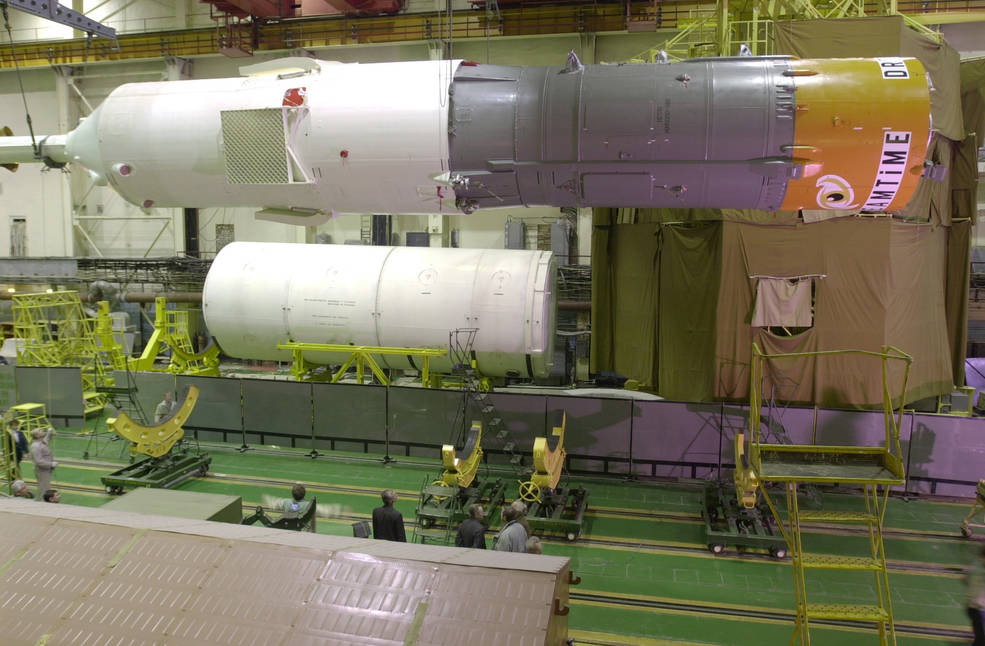
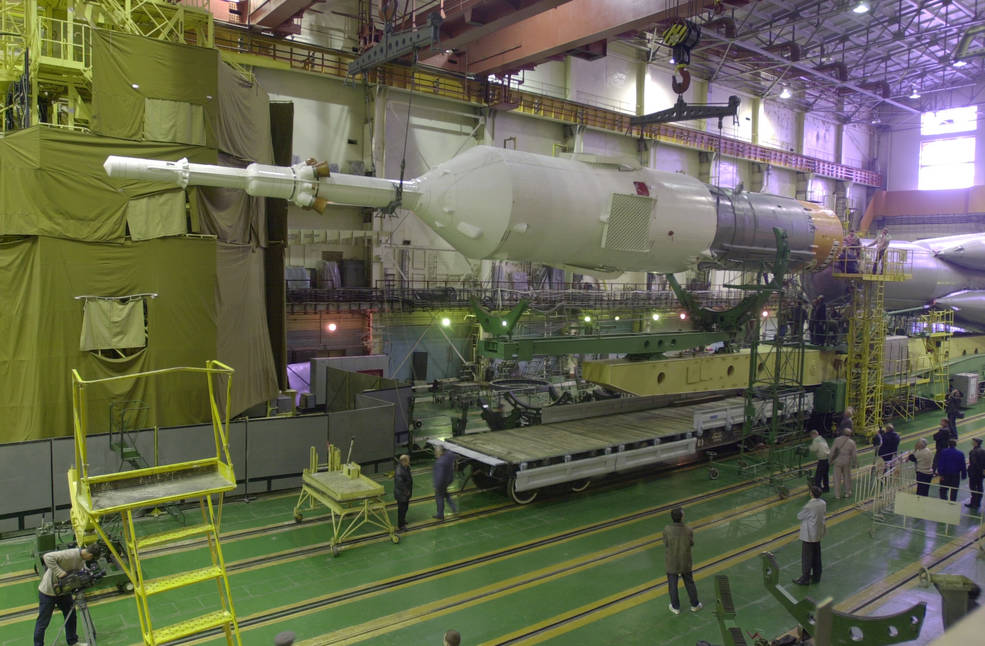
Left: Workers prepare to attach the Soyuz TM31 spacecraft and third stage assembly to
the booster stage. Right: Workers align the Soyuz and its upper stage to mate them with
the booster stage.
Photo credits: NASA/Bill Ingalls.
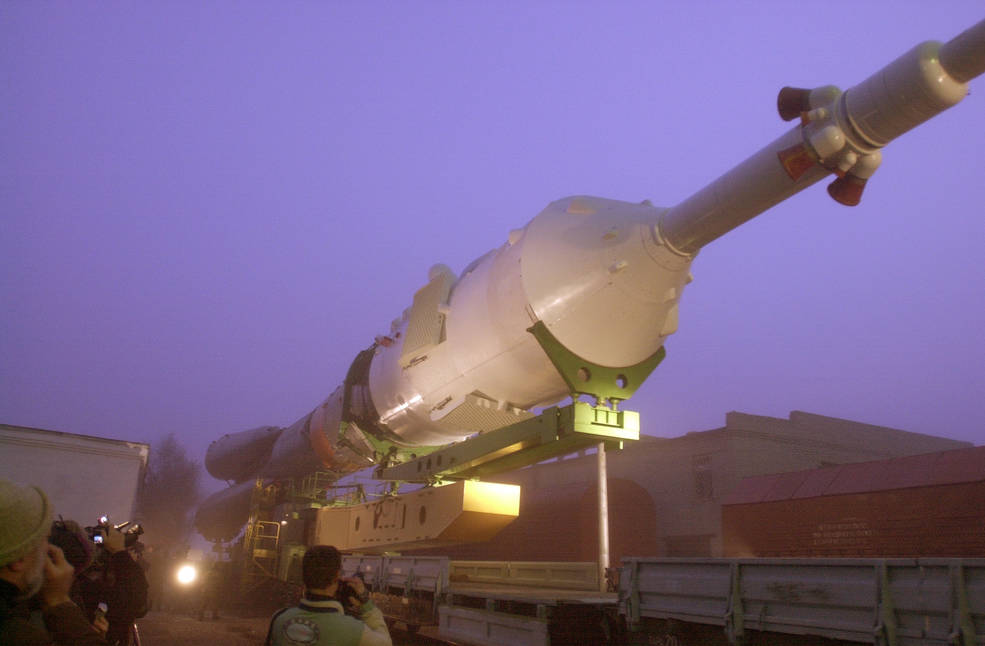
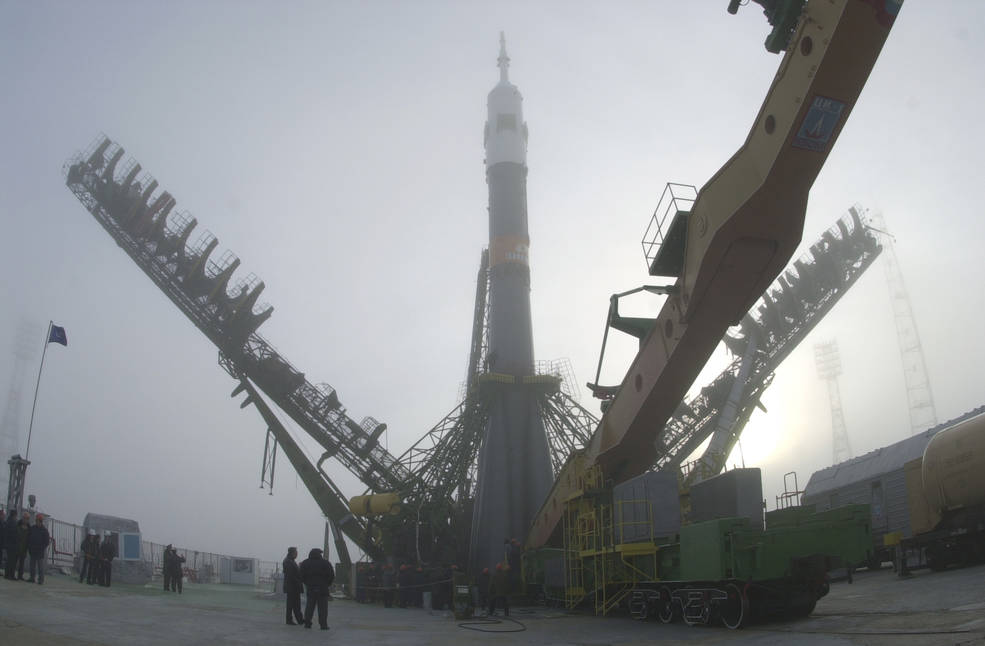
Left: The rocket carrying the Soyuz TM31 spacecraft begins its rollout to Launch Pad 1.
Right: Workers have erected the rocket and its Soyuz TM31 spacecraft on Launch Pad 1.
Photo credits: NASA/Bill Ingalls.
The Russian State Commission met on Oct. 30 to confirm the readiness of the launch the next day. It officially confirmed Shepherd, Gidzenko, and Krikalev as the crew who would undertake the mission. This marked the last full day when all of humanity was together on planet Earth. Since then, there has always been someone living and working aboard the ISS.
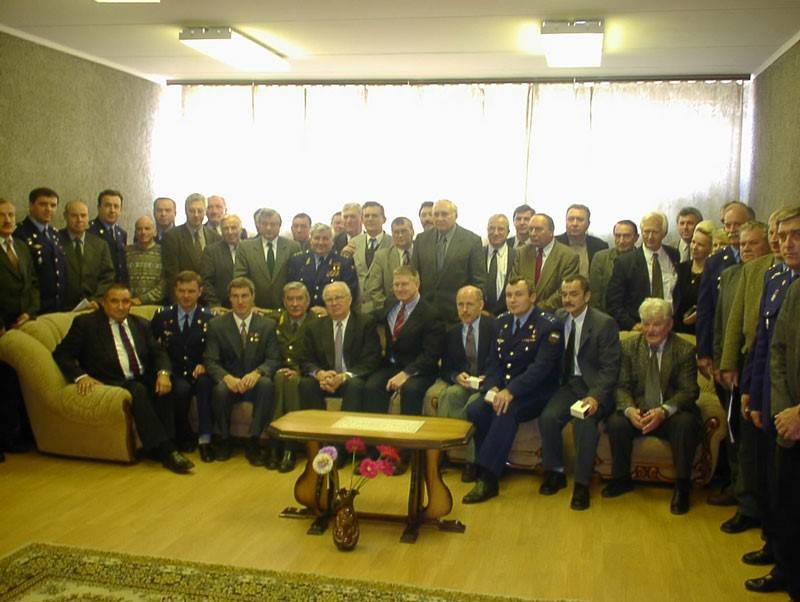
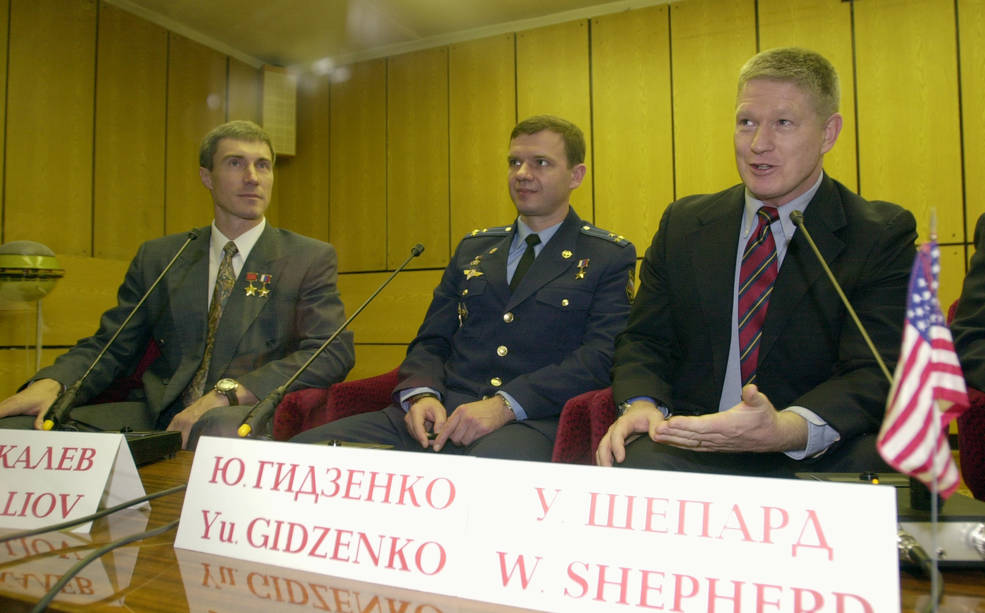
Left: The Expedition 1 prime and backup crews posing with the State Commission after
it officially named William M. Shepherd, Yuri P. Gidzenko, and Sergei K. Krikalev as
the crew who would fly the mission. Right: Krikalev, left, Gidzenko, and Shepherd
reporting to the State Commission that confirmed them as the Expedition 1 crew.
Photo credits: NASA/Bill Ingalls.
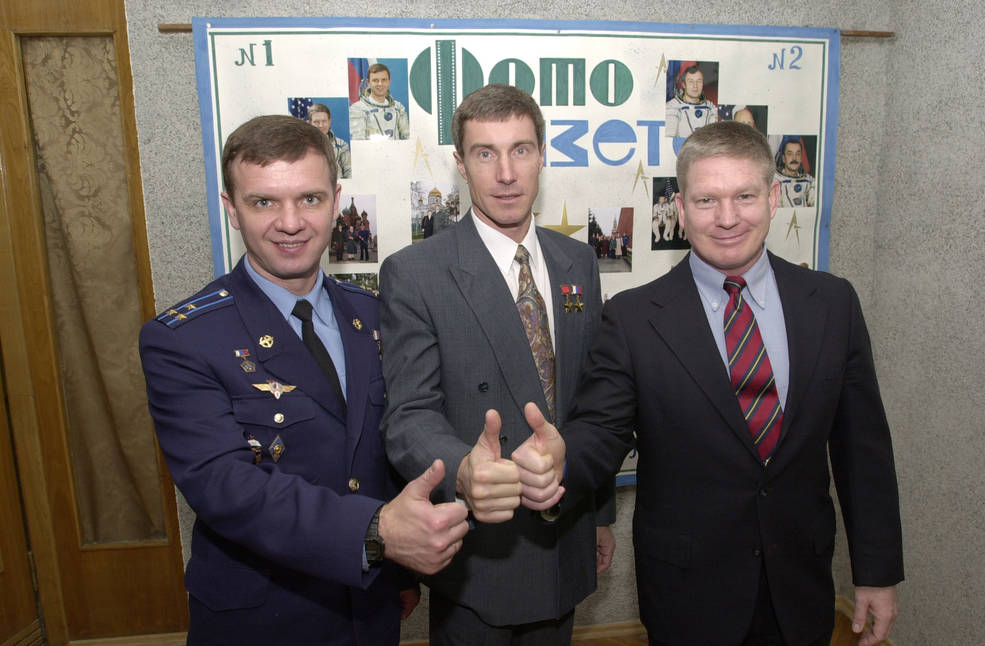
The Expedition 1 crew of Yuri P. Gidzenko, left, Sergei K. Krikalev, and
William M. Shepherd signal their readiness the day before their historic
launch. It was the last full day that all of humanity spent together on
the planet.
Photo credit: NASA/Bill Ingalls.
Meanwhile, as the Expedition 1 crew prepared for its historic launch, at NASA’s Kennedy Space Center workers continued to prepare space shuttle Endeavour for its next flight, STS-97. During that mission, launched on Nov. 30, 2000, and the first to dock with an occupied ISS, crew members installed the P6 truss segment that included the first set of solar arrays to provide power to the growing orbital outpost.
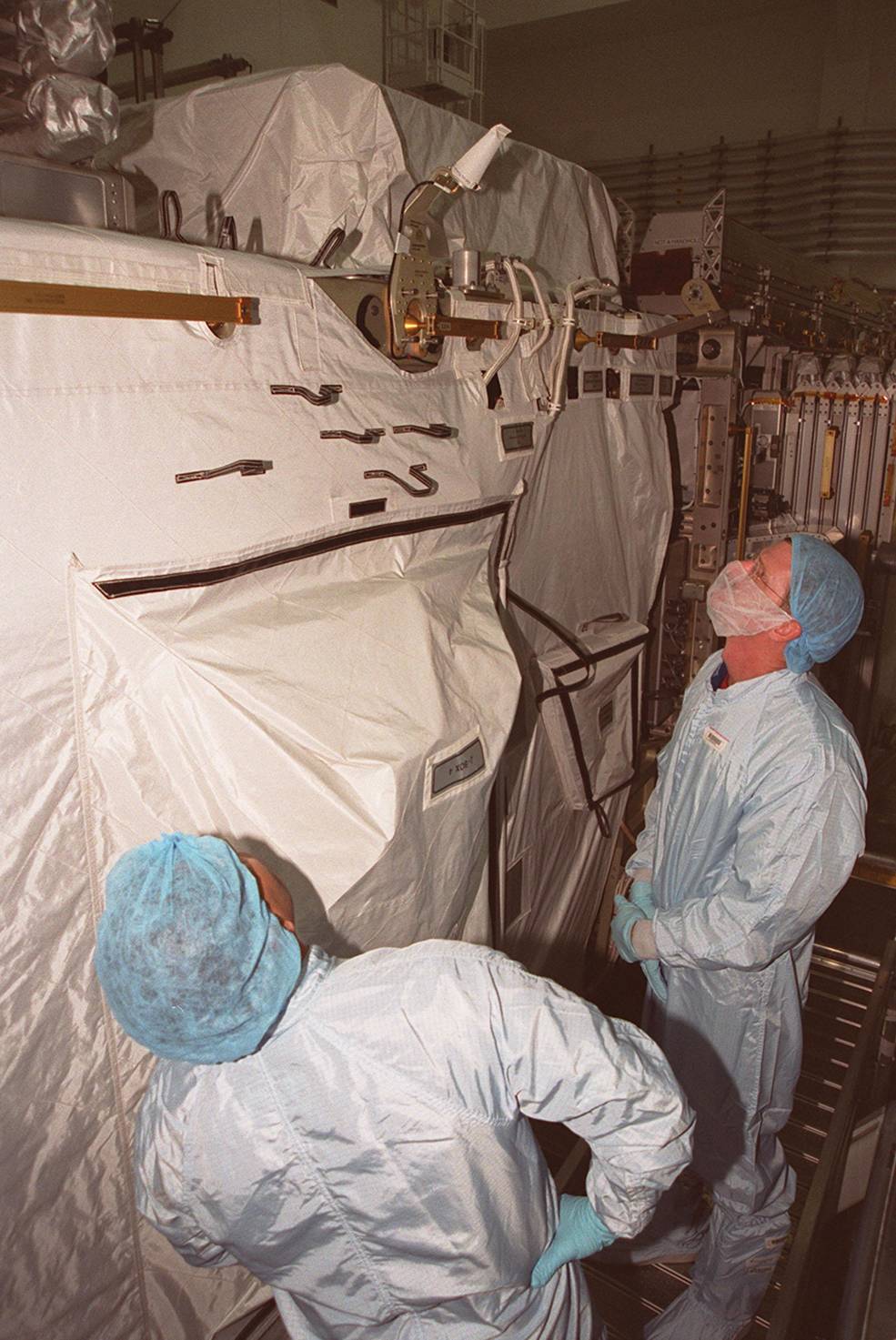
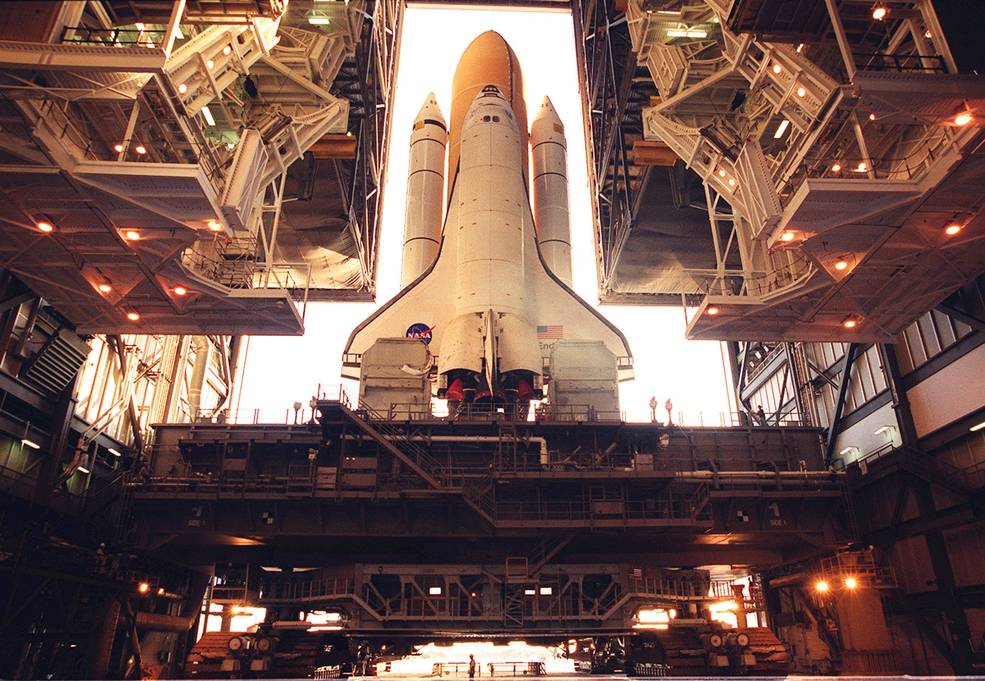

Left: STS-97 crew members Carlos I. Noriega and Joseph R. Tanner examine the P6 truss
segment at NASA’s Kennedy Space Center. Middle: Space shuttle Endeavour begins
its rollout to the launch pad. Right: Space shuttle Endeavour at Launch Pad 39B.
To be continued…
























